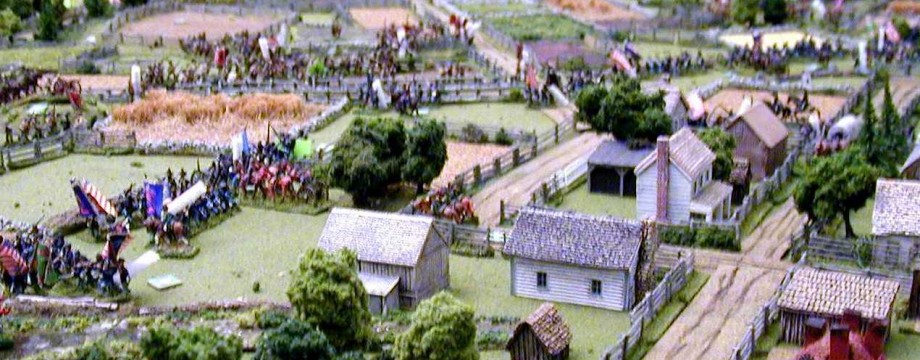One of my sons, Dr. Thomas M. Mingus, lives near Slippery Rock, Pennsylvania. I stopped by his place this weekend on my way to Pittsburgh for a speaking engagement at the Greater Pittsburgh Civil War Round Table. On a gorgeous Sunday afternoon, we went exploring some of the historical sites in the area. Less than two miles west of Slippery Rock along Wolf Creek is the site of an old Delaware Indian village dating from the 18th century and earlier. Archaeological studies have revealed the location of some of the structures associated with the settlement. During the French & Indian War, this village was an active site for some of the French-allied warriors. A peace treaty signed near this marker was among the important steps that finally led to a cessation of hostilities between the colonial settlers and the natives. A Moravian missionary named Christian Frederick Post convinced King Beaver (aka Tamaqua) of the Delawares to lay down the hatchet.
I find it interesting that this out-of-way and very obscure historical site marks the location of the signing of the “most important treaty ever concluded with the North American Indians…,” a strong claim considering how many other treaties were signed in the ensuing decades across the continent as white civilization expanded westward in accordnace with the “manifest destiny” movement.
Wolf Creek is barely discernible in the left center of this photo; it is much more visible in person. The ground slopes off in a series of low shelves down to the creek bed. King Beaver and his “turkey clan” of Delawares lived in this general vicinity in log huts.
Missionary Christian Frederick Post also met with King Beaver at Fort Duquesne near present day Pittsburgh on August 23, 1758. He recounted in his diary, “We continued our journey to the fort; and arrived in sight, on this side of the river, in the afternoon, and all the Indian chiefs immediately came over, they called me into the middle, and King Beaver presented me to them, and said, “Here is our English brother, who had brought me great news.”
For more information, click here. The site is now a public park, with a very relaxing hiking trail through a wooded creekside environment. Parking is somewhat limited and there are no bathroom facilities, but this is a neat area tucked in the middle of a farming area that is slowly being developed. The historical society and local government is to be commended for preserving the site of the Delaware village as a public park.



